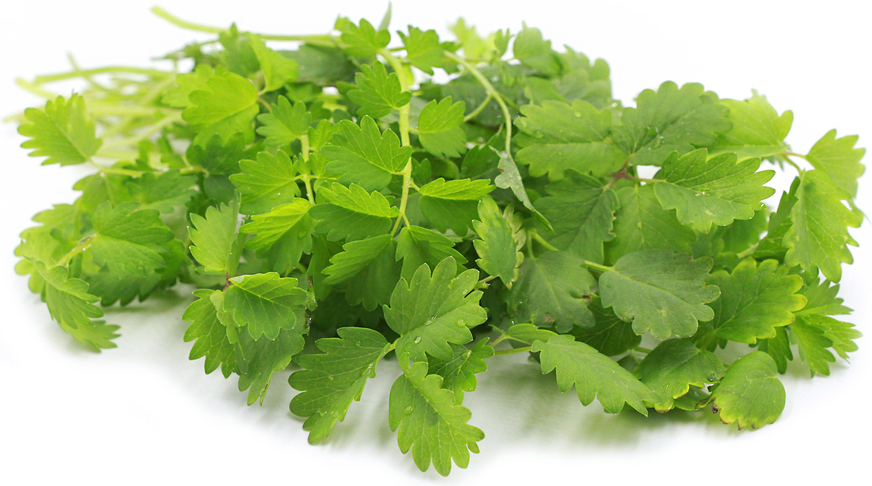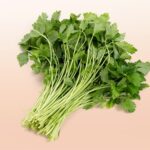Discover the unique qualities of Salad Burnet, a perennial herb that adds a crisp cucumber flavor to your culinary creations. Often overlooked in the herb garden, Salad Burnet is not just a culinary delight but also offers a range of health benefits and is a charming addition to any green space.
From its historical use to modern kitchen applications, learn how this herb can enhance your dishes, provide nutritional benefits, and thrive in your garden.
What Is Salad Burnet?
Salad Burnet, known scientifically as Sanguisorba minor, is a member of the Rosaceae family. This perennial herb is cherished for its cucumber-flavored leaves, which remain evergreen in mild climates. Native to Europe and parts of Asia, it has been cultivated since the 16th century for both its ornamental and culinary value.
With fern-like foliage and small, reddish-purple flowers, Salad Burnet is as aesthetically pleasing as it is flavorful. It’s a hardy plant that thrives in a range of conditions and is particularly suited to zones 4-10. The plant’s ability to self-seed and spread through rhizomes makes it a resilient choice for novice and seasoned gardeners alike.
In addition to its use in gardens, Salad Burnet has a long history of medicinal use. Its name, ‘burnet’, is derived from the Latin word ‘burnetum’, meaning ‘place of springs’, a nod to the herb’s association with healing and vitality.
What Are the Culinary Uses of Salad Burnet?
The culinary uses of Salad Burnet are diverse and imaginative. Its leaves impart a light, cucumber-like taste that is perfect for refreshing summer dishes.
- Add to salads for a burst of freshness
- Blend into dressings and dips for a subtle, herby zing
- Stir into cream cheeses and compound butters
- Use as a decorative and flavorful garnish in cocktails
- Incorporate into cold soups like gazpacho
Chefs and home cooks alike treasure Salad Burnet for its versatility and its ability to elevate the taste profile of various dishes. Whether used fresh or as part of a dried herb mix, the Salad Burnet flavor profile is a delightful addition to any recipe.
What Are the Benefits of Salad Burnet Herb?
The health benefits of Salad Burnet are notable. It’s rich in antioxidants, vitamins, and minerals, which contribute to overall well-being. Preliminary research suggests that it may support digestive health and has been historically used to aid in wound healing due to its astringent properties.
While more scientific research is needed to fully understand its health implications, many herbalists and natural health enthusiasts continue to use Salad Burnet for its potential medicinal properties.
How Can You Grow Salad Burnet in Your Garden?
Growing Salad Burnet in containers or a garden bed is relatively straightforward. This herb prefers full sun to partial shade and well-drained soil. It’s drought-resistant once established, making it a low-maintenance choice for gardeners with busier schedules.
Start with seeds or division in the spring. Ensure regular watering until the plant is well-established. To maintain its compact shape and encourage new growth, regular trimming is recommended. As a bonus, Salad Burnet is generally resistant to pests and diseases.
For those with limited space, growing Salad Burnet in containers is a viable option. The plant’s non-invasive nature makes it well-suited to container gardening. Just be sure to choose a pot with adequate drainage and to place it in a spot that receives ample sunlight.
How Do You Propagate Salad Burnet?
Propagation techniques for Salad Burnet include both seed sowing and division. To propagate by division, simply separate a mature plant into smaller sections and replant these in your desired location. This method can be done in either spring or fall and is a quick way to expand your herb garden.
If starting from seeds, sow them directly in the ground in late spring or start them indoors a few weeks before the last frost. Seedlings typically emerge within two to three weeks. Once established, Salad Burnet can propagate itself through self-seeding if the flowers are allowed to mature and spread their seeds.
What Are Some Creative Salad Burnet Recipes?
When it comes to Salad Burnet recipes for summer dishes, creativity is your only limit. Here are a few ideas to get you started:
- A refreshing cucumber and Salad Burnet infused water
- A vibrant green goddess dressing with a Salad Burnet twist
- A creamy Salad Burnet and chive dip for vegetables or chips
- A zesty Salad Burnet pesto to toss with pasta or spread on sandwiches
Its distinctive flavor also makes Salad Burnet an excellent substitute for traditional cucumber in tzatziki or other yogurt-based condiments.
To add an educational touch to our exploration of Salad Burnet, let’s include a video from the carousel provided. The following video offers insightful tips on herb propagation techniques, which may be particularly useful for those interested in propagating Salad Burnet in their garden.
Salad Burnet: Questions and Answers
What Is Salad Burnet Used For?
Primarily, Salad Burnet is used in the culinary world to add a fresh, cucumber-like flavor to a range of dishes. It is also used as a medicinal plant historically, believed to help with various ailments due to its astringent properties.
Beyond its practical uses, the attractive foliage and flowers of Salad Burnet make it a popular choice for ornamental gardens as well.
How Do You Eat Salad Burnet?
Salad Burnet can be eaten fresh or used as a dried herb. Fresh leaves are most commonly chopped and added to salads, dressings, or used as a garnish. The leaves can also be incorporated into compound butters and spreads or used to infuse drinks with a subtle, herby flavor.
Dried Salad Burnet can be used similarly to other dried herbs, included in herb mixes or as a standalone seasoning.
What Are the Nutritional Benefits of Salad Burnet?
The nutritional benefits of Salad Burnet include its high vitamin C content, along with a good supply of fiber, calcium, and iron. Its antioxidant properties may help to fight oxidative stress and support overall health.
As with any herb or supplement, it’s wise to consult with a healthcare provider before using Salad Burnet for its nutritional benefits, especially if you have pre-existing health conditions.
Can Salad Burnet Be Used In Herbal Medicine?
Yes, Salad Burnet has a history of use in herbal medicine. It has been employed for its astringent, anti-inflammatory, and cooling properties. It’s believed to aid in digestion and wound healing, although these uses are based more on historical precedent than modern scientific evidence.
It’s important to approach herbal medicine with caution and seek professional advice before self-treating with Salad Burnet or any other herb.
What Are The Best Growing Conditions For Salad Burnet?
Salad Burnet flourishes in full sun to partial shade with well-draining soil. It is tolerant of a range of soil conditions and is quite drought-resistant once established. The best growing conditions also include moderate watering and occasional trimming to promote a bushier plant.
It’s a flexible herb that adapts well to various environments, making it an excellent choice for both seasoned and novice gardeners.








I had no idea Salad Burnet could be such a versatile herb! I love discovering new flavors for my kitchen experiments, and the cucumber-like taste sounds perfect for summer dishes. Plus, it’s great to know it’s easy to grow and has health benefits too. Definitely adding this to my garden list! Thanks for sharing such a detailed guide.